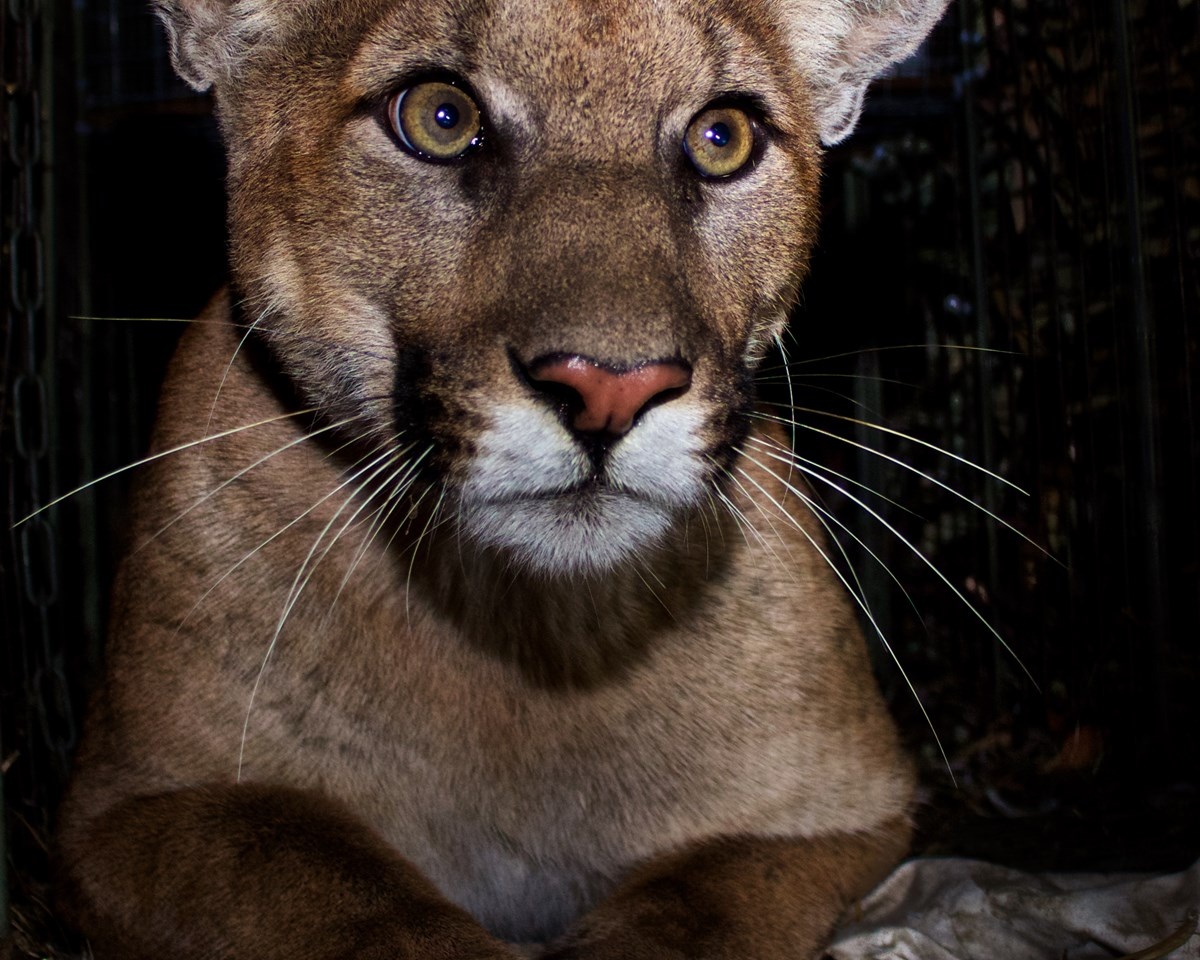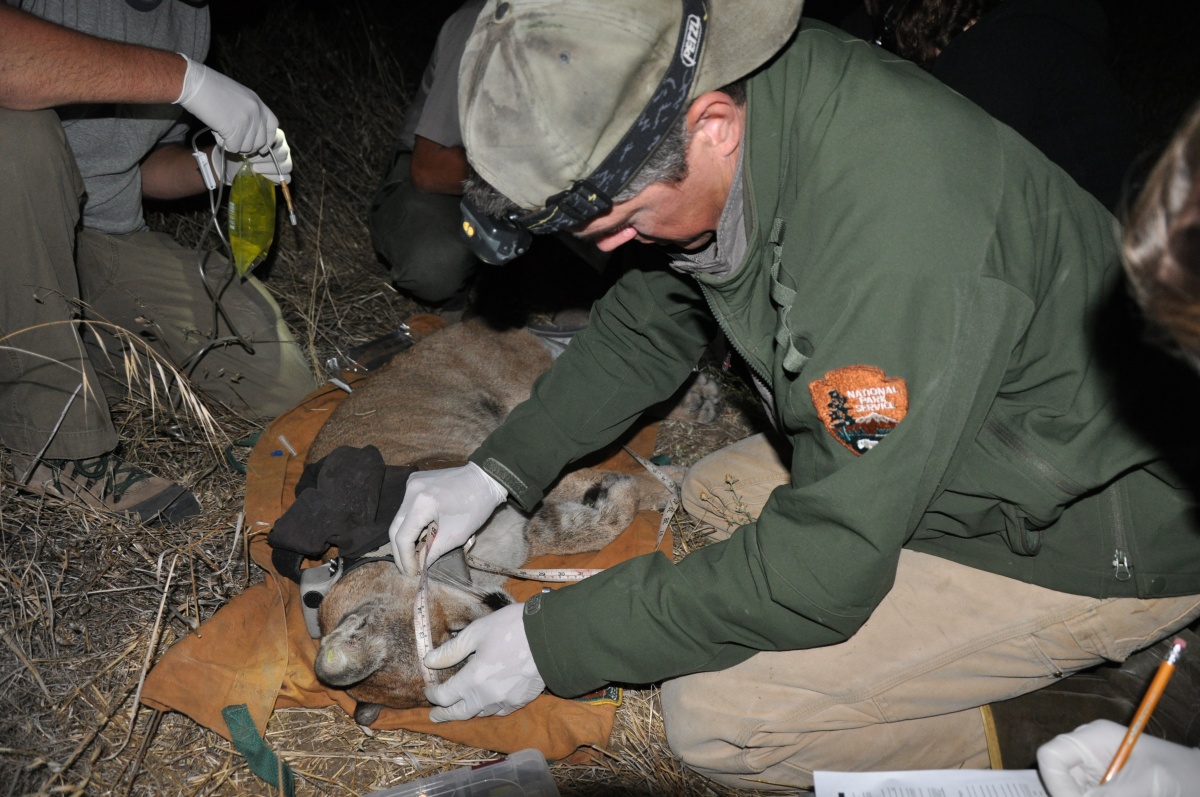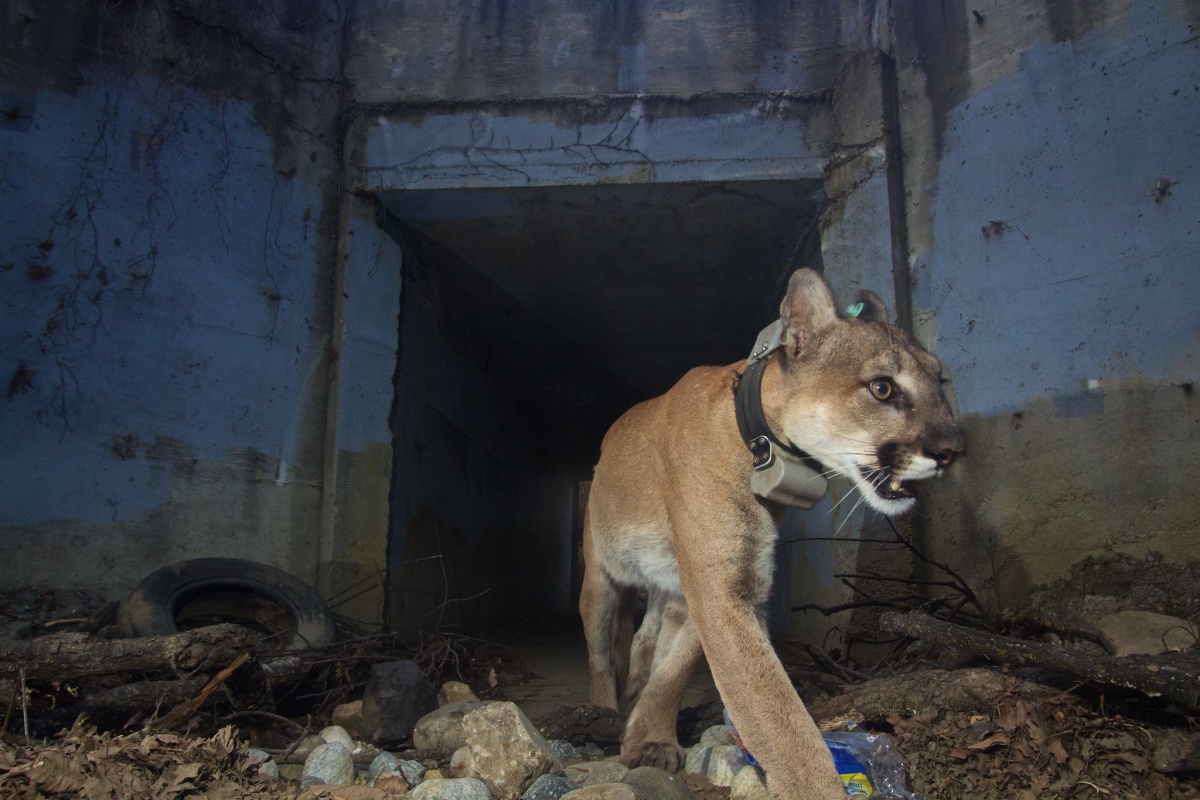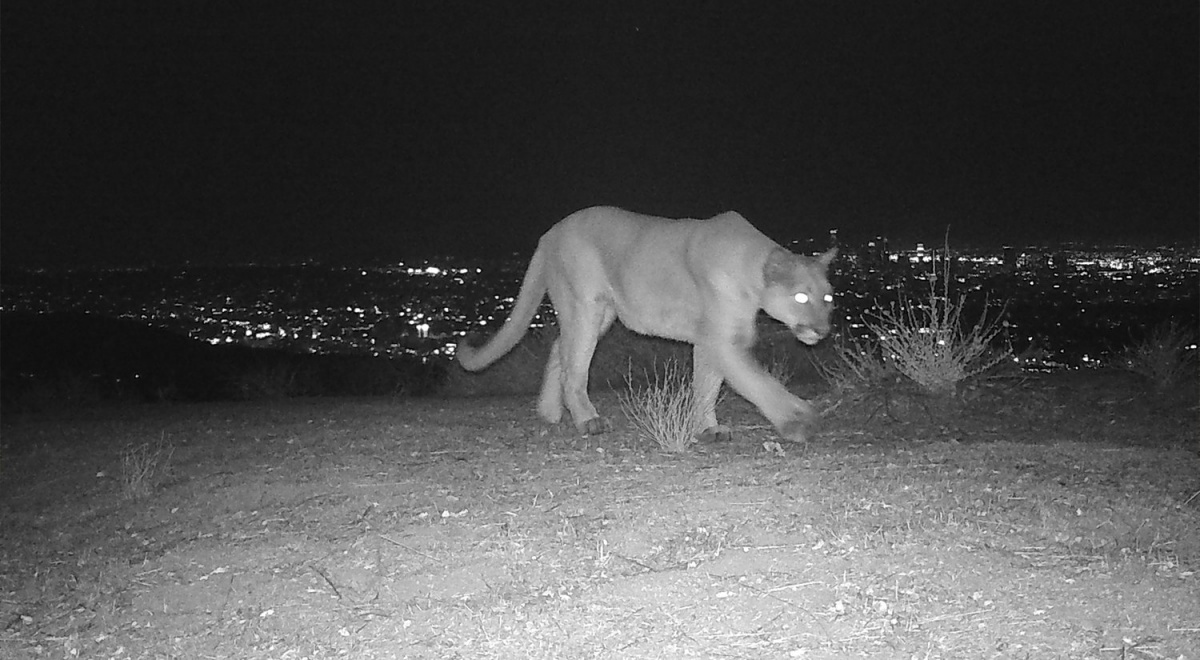In the 17 years that the National Park Service has operated their notable mountain lion study, the cats’ encounters with the 405 Freeway haven’t often gone well.
In 2009 an un-collared mountain lion was struck and killed by a vehicle while attempting to cross the 405 eastwards; the same thing happened to the collared P-18 (the 18th puma collared in the study) in 2011.
The mountain lion known as P-22, perhaps the most famous of his species in the world, was discovered in Griffith Park in 2012. DNA samples traced his origins to the Santa Monica Mountains, meaning that to get to Griffith Park he would have had to have crossed both the 405 and 101 freeways — a remarkable feat.
Now another mountain lion, P-61, has successfully crossed the 405.

On July 19 between the hours of 2:00 and 4:00 am, the National Park Service reports that a 4-year old male made its way from the eastern end of the Santa Monica Mountains and across the 405 Freeway.
“Although P-61 successfully crossed the 405, his feat is a reminder of how challenging Southern California’s road network is for mountain lions and other wildlife, as well,” said Jeff Sikich, NPS biologist and mountain lion expert at the Santa Monica Mountains National Recreation Area (SAMO).
P-22 was only fitted with a collar after being captured by Sikich and wildlife ecologist Seth Riley in Griffith Park, so P-61’s journey represents valuable data for SAMO biologists studying mountain movement in a fragmented world.

Mountain lions of the Santa Monicas are essentially trapped on an island: hemmed in by Pacific Ocean, the 101 and 405 freeways (several smaller freeways and roads also split up contiguous tracts of land in the mountains), and urban development on all sides, maturing young adults seeking their own territory are pressed for space.

Male mountain lions have been known to command ranges of up to 200 square miles, so space is highly coveted and often viciously combated over. The leading cause of death for mountain lions in the Santa Monicas?
Thus a possible reason for P-61, a healthy, full-grown adult male, embarking across a dangerous stretch of road populated by hurtling metal monsters.
The twist, however, is that another large but un-collared male has been documented in the same area east of the 405.

“It will be interesting to see if P-61 stays in the area, whether he decides to challenge the uncollared lion, or if he heads back to the other side of the freeway,” said Sikich. “Although it’s a relatively small area of habitat, it’s certainly larger than the Griffith Park area and does have a patchwork of natural areas.”
Will the town be big enough for the two of them?
“Without proper connectivity, that likely becomes a death trap for one of the lions when they cross paths. And if one disperses further east, it just ends up in P-22 territory,” said Tony Tucci, director of the nonprofit Citizens for Los Angeles Wildlife (CLAW).

P-22 has adapted to a veritably unprecedented 6.7 square mile home range in Griffith Park. CLAW and the Santa Monica Mountains Conservancy estimate that the area east of the 405 and west of the 101 contains between 11 and 12.5 square miles of natural space.















.png)







